The most important thing to realize of course is that dogs limp for a variety of reasons, just like humans. Injury, discomfort, soreness, stiffness, or something sharp on the bottom of the foot tend to be the big ones.
First, you have to be able to tell if your dog is limping. Sometimes it is obvious, such as when the dog is no longer weight bearing on a certain leg- that gives you an obvious indication of which leg is the problem. If the limp is more minor, though, the easiest way to pinpoint which leg is the problem is to watch the dog from the side while they trot past you. The trot is a gait that should be completely even. A dog with a good build will form matching triangles with their front and rear while at the trot. If a dog is limping, trotting will show the injury the most clearly because one of the legs will not be quite in sync with the rest. Depending on the severity of the limp, the dog may also bob their head while trotting as a means of compensating for the leg they don't want to/can't use fully. All of this is much easier to see from the side than from above, so if possible, have someone else gait your dog while you watch from the side.
You can see in this video how hard it is to see the dog's gait when you are looking from above. If you don't have anyone available to trot your dog for you, try to get directly behind them and watch for even movement of the hips and shoulders at the trot.
Once you determine if your dog is, in fact, limping, you can decide what to do. And that depends on a number of things. First, when did your dog start limping?
If you were walking along on a path and your dog suddenly starts having a dramatic limp, my experience shows that it is most likely a thorn or something in the foot. I will stop and carefully check over the toes, bottom of the foot pads, and in between the footpads, and remove any thorns that I can see. If I can't see anything, I will check everything over again, rubbing my finger across the foot pads and between the pads. Generally, that fixes the problem. If it doesn't, I will walk a few feet, because sometimes the dog will limp in anticipation of the foot hurting and it takes a few strides for them to stop limping.
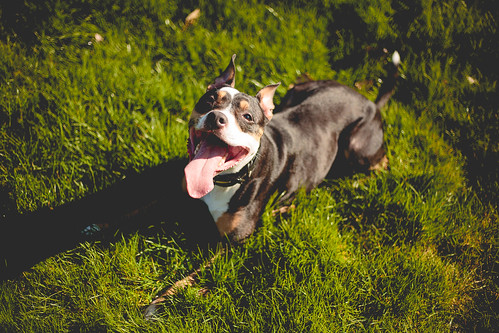 |
If you are in the middle of playing an active game like fetch and your dog suddenly stops and comes back limping, it is time to end the game regardless for the reason for the limp. Most of the time, it seems to be a pulled muscle (which is more likely to happen in a dog who is tired because they are misstepping and misjudging). However, a sudden onset limp during exercise can be a more serious injury like a torn CCL (the tendon in the dog's knee). My first order of business if this situation occurs is to stop the game and see if I can determine exactly what the problem is. I will check feet to eliminate a cut or a thorn, then go up the leg gently bending each joint. If the dog reacts by pulling away, flinching, or the joint doesn't easily bend as far as normal, I know where the injury is. If the leg that appears to be limping doesn't have an obvious reaction from the dog, I will carefully feel along the spine from neck to base of tail, as a neck or spine issue can cause limping. I don't spend a super long time doing this, it is more of a quick field assessment to gain information on what to do next. If the dog is willing and able to walk, I will use the walk back to the car to carefully watch the dog- is the limp getting worse or better during the walk? Sometimes a short walk back to the car is enough to clear up the limp completely, in which case I assume that the dog tweaked something or stubbed a toe in such a way that it hurt really bad at first, but fades to feeling just fine pretty quickly.
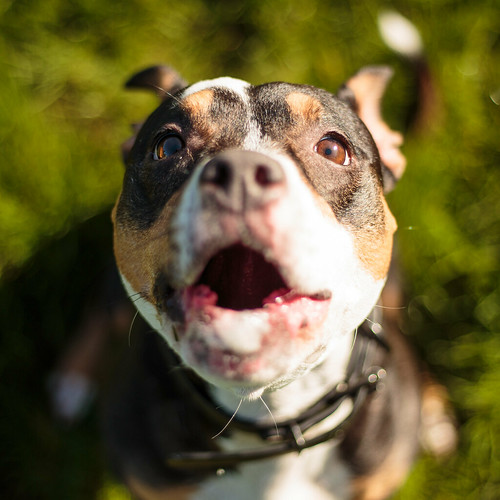 |
| Yelling at the camera |
Different from the abrupt stop during strenuous exercise is the small limp that becomes evident only afterwards. I will check over the dog in the same way, but generally, this type of limp seems to be from doing too much. The dog gets tired, and the weakest point starts hurting. We never had this happen, actually, until Koira got older. Once she had a few more serious injuries in the past, I started seeing the limp-after-exercise occur, always on the same leg where she has previous shoulder and elbow injuries. Doing too much makes those old injuries flare up a little causing a limp. If my general check over doesn't reveal anything other than the old injury being a bit sore, we will end the game and head home, but I don't tend to be super worried about it. I have old injuries that get irritated when I do too much too.
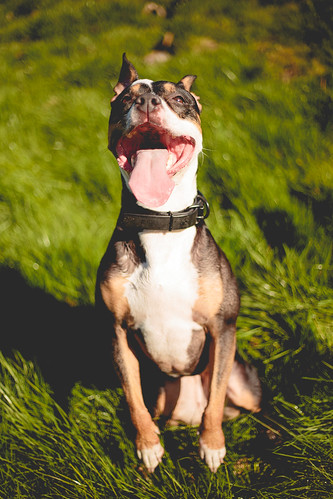 |
| Taking a break from disc to do some core work with a sit pretty at the park |
The other limp we have seen more recently is a limp at the very beginning of our walk. It might start out kind of bad, but movement makes it more minor, and with continued walking, the limp goes away. This is basically stiffness that needs to be worked out. It might be from arthritis and joints that don't want to start moving, or it might be soreness from doing a lot the day before and all the muscles are complaining, but nothing is actually injured. I feel like this after a day of serious hiking, and even though I feel like all I want to do is lay in bed, I know that the way to feel better is to get up, move around, and limber up. If Koira has a limp that she didn't have the day before, I will stay close to home while we walk a little more. If the limp seems to be getting better rather than worse or staying the same, I assume it is stiffness/soreness, rather than an actual injury.
So what do I do with each of these situations? In the first, removing the thorn tends to fix the problem. If Koira still has a bit of a limp when we get home, I will check paws again and apply antibacterial ointment with pain killer, since some thorns can hurt for a long time even after they are removed. In the second, I head home and restrict the dog to leash walking. If the limp doesn't seem to be getting better after 2-3 days of restricted activity, or if it seems to be getting worse, I will contact the vet. Or, if the limp is severe to begin with, I may contact the vet right away. It depends on how bad it looks. The limping-after-exercise situation I will again restrict the dog to leash walks only. I may give some Vetprofen as well, which our vet has prescribed specifically for days and weekends when Koira has a lot of activity. It is much the same as me taking some Ibuprofen before and after heavy activity. And the last situation, with a soreness/stiffness limp, I will lower the activity level a little for a few days, but make sure to stay active with plenty of leash walks to help stay limber. Again, I might give some Vetprofen to reduce inflammation. In any one of these situations if the limp persists or gets worse, I will talk to my vet. Sometimes we will make an appointment to have a chiropractic adjustment done, or to have a massage done.
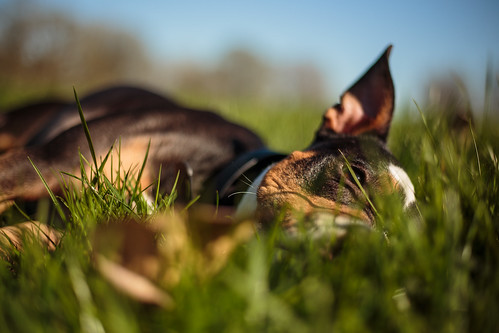 |
| Chilaxing. |
To be prepared, you should make sure that your dog is okay with being handled. Go over them regularly as if you are checking for a limp, gently flexing at the wrist, elbow, shoulder, hock, and knee. You need to be familiar with handling your dog so you know what the various parts of your dog feel like. Koira has less range of motion in her right shoulder and elbow, for example, so I know that just because the rom is lower there doesn't mean that that is where she is hurting. Also, you want to know that if your dog resists the movement or tries to pull away, it is because of pain, not because they are unused to being handled. But, as always, you can and should go to the vet if you are unsure. That is what they are for. My vet likely thinks I am paranoid because my dog has gone in so many times for limps that only I can see (Koira gets excited there, which often causes limps to disappear while there). But as long as my dog is healthy, I'm okay with it.
The best way to prevent injury is to make sure your dog is in shape. They shouldn't be overweight. They should be well conditioned. You should keep an eye on and know how conditioned your dog is (is it winter, and you've been less active, or summer, and you've had all season to condition) and make sure to restrict activity to a point that your dog can do safely. It can be hard when the sun comes out in the winter to not go hog wild to enjoy every bit of sun. Regular activity and slowly introducing new activities is essential to keeping dogs healthy. As dogs age, joint supplements can be great for helping keep them limber (Koira is on Glycoflex Plus). If your dog is older, ask your vet about keeping a medication like Vetprofen on hand for as-needed inflammation reduction. Check out your area and see if there are classes taught by certified FitPaws Master Trainers or Certified Canine Fitness Trainers, as they can help pinpoint the areas your dog needs improvement in and show you how to make those improvements. A canine chiropractor or massage therapist might be a great resource to have as well, since active dogs often benefit from those treatments even if they aren't showing any pain. Above all, know your dog.

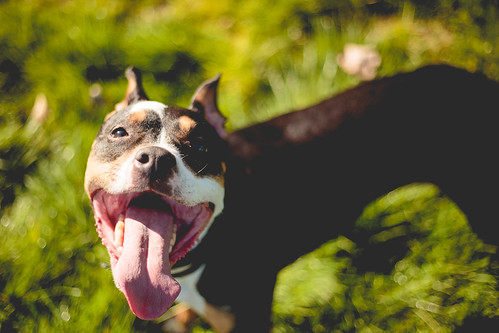
We had a nasty sand burr incident a couple years ago in Florida, poor Katie, but it turned out alright. Bailie had a limp a couple weeks ago, but that was fixed by a chiropractor visit. If you know your dog, it's easier to help them get feeling better.
ReplyDeleteI think knowing your dog (like Emma stated) makes it easier to pick up on something like a limp #sometimes Very nicely written. Thank you.
ReplyDeleteGood things to think about! And like you say, know your dog is so important!
ReplyDeleteGreat points. It's so hard sometimes to make out where the limp is. Not to be dramatic, but limping is also our first signal to a more serious problem. Both with Becca and Maggie our first indication of their osteosarcoma was a small limp that just didn't improve even with complete rest. So it's important not to take any chances with a limp.
ReplyDeleteExcellent points! The pups have had limps caused by stepping into something on our walks/hikes, and thankfully it was always an easy fix by just removing whatever is was. I'm trying to be proactive about keeping their joints fit by providing natural forms of glucosamine & chondroitin (I feed duck feet & green lipped mussels every day for this very purpose).
ReplyDelete